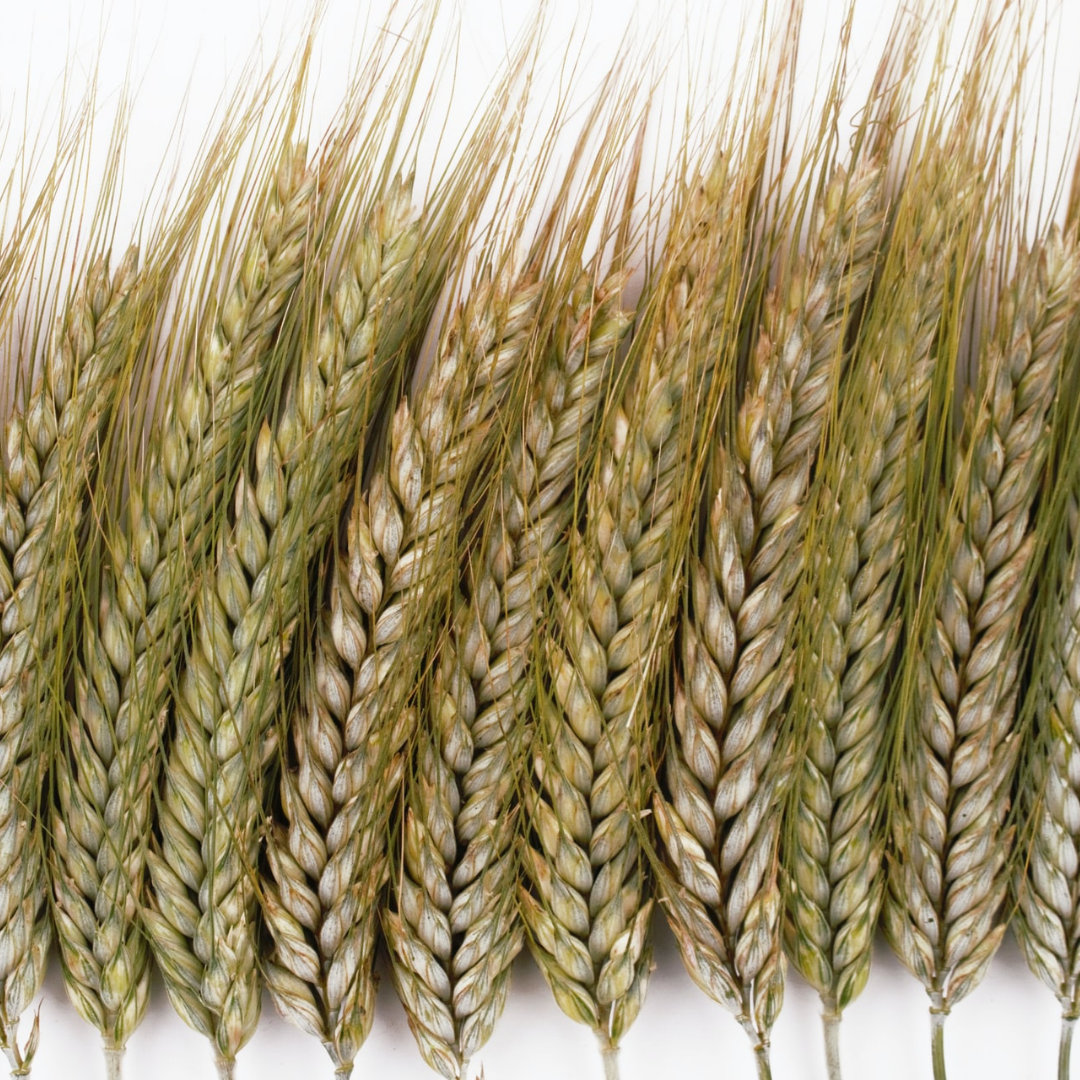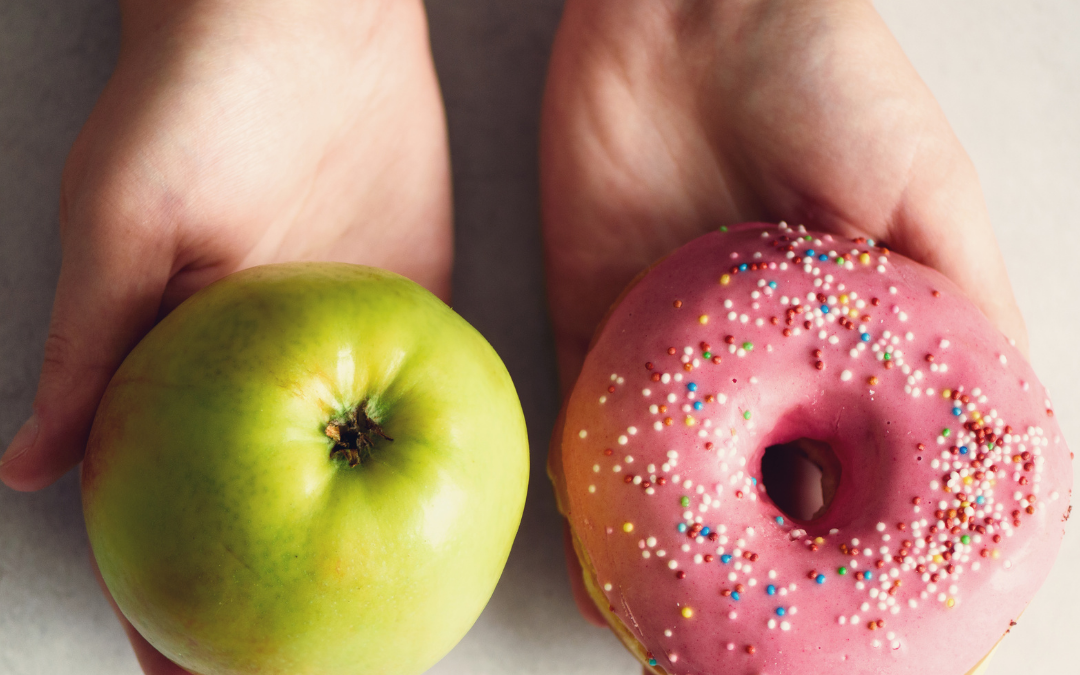
Related Posts

A TURN TOWARD NATURE TO SOLVE THE “PROBLEMS” WITH MEAT
Related PostsWhat’s up...

PASS THE SALT
Related PostsSalt is in...

THE “SAD” AMERICAN DIET
Related Posts What is...

GOOD FAD, BAD FAD
Related PostsI recently...

CAN YOU EAT MEAT AND AVOID HEART DISEASE?
Related PostsIs eating...

GRAINS: HEALTH FOOD OR POISON?
Grains are an increasingly controversial food group. Many nutrition experts say that whole grains are an essential part of a healthy diet, and others say they are harmful. So what do grains do in our bodies, and how do we know if we should eat them? What is the place of whole grains in the diet of someone with heart disease?
Experts weigh in
The institutional support for grains, including wheat, corn, rice, and oats, in our diets is strong. The USDA recommends that Americans obtain a whopping half of our calories from grains. Grains are by far the largest source of food energy on the planet, with 20% of all food energy coming from wheat alone. But recent books, such as Wheat Belly by cardiologist William Davis, MD, and Grain Brain by neurologist David Perlmutter, MD, describe how grains, especially wheat, contribute to chronic diseases, including heart disease and dementia. When we eat grains, the glucose they contain fuels our muscles and organs. Proponents of Whole30, paleo, and ketogenic diets cite our natural ability to burn stored fat, in the form of ketones, for fuel. Through this lens, carbohydrates, and especially grains that tend to raise blood glucose, are far more harmful than helpful.
Conventional wisdom argues that criticisms of wheat and grains are overblown. It maintains that grains are necessary and whole grains promote health by reducing cardiovascular risk.
Grains vs. fat
Dietary guidelines upholding that grains are healthy generally assume that dietary fat is bad. Therefore, a carbohydrate-based diet consisting of grains must be better. In a recent Tufts University nutrient profiling study, Food Compass, Cheerios scored a 95 out of 100, classifying it as one of the healthiest foods available. Meanwhile vegetables, meat, and eggs—which are less processed and have more protein and bio-available nutrients—scored lower. The Food Compass results are the latest round in the debate of grains versus fat. Today we’ll focus on how grains, specifically wheat, affect our health.
There are studies that demonstrate the cardiometabolic benefits of whole grains, but the benefit is present only when they’re replacing consumption of refined grains. Refined grains in the form of ultra-processed foods, such as white bread, pasta, and pizza, have no nutritional value. Any dietary change that reduces them demonstrates health benefits. That is not a rousing endorsement of whole grains. Less bad is not good.
Refined vs. whole grains
Whole grains are very different from the refined grains that dominate our diets. The grains we eat are the seeds of grasses and must be milled to be edible. Milling cracks open the hard shell, or bran, of the kernel, separating the bran, endosperm, and the germ, or embryo. When the bran and germ are removed, the remaining endosperm becomes refined or white flour.
Refined wheat has a very long shelf life, allowing for easy global transport. Refined flour is a valuable commodity that forms the basis of our food economy. It contains glutenin and gliadin proteins and is fortified to replace some of the B vitamins lost in milling. But mostly, refined flour contains sugar in the form of amylopectin. Even products labelled “whole grain” have up to 50% refined grain. If the milling process retains the germ and bran, that is whole wheat. Whole wheat has more nutrients than refined flour, but spoils more quickly.
The big difference between refined and whole grains is their fiber content. Fiber in whole grains slows absorption of glucose in the gut, meaning a lower glycemic load. Fiber feeds the microbiome in ways that reduce appetite and improve gut health. It also absorbs some of the cholesterol circulating through the gut in the form of bile. There are other high-fiber foods that provide these benefits besides grains—namely many vegetables.
Be aware that products labelled whole grain often are not. The USDA says that foods can be certified “whole grain” if only 51% of the product is whole grain.
The downside of wheat
In their books mentioned above, Williams and Perlmutter point out multiple potential health-damaging effects of wheat and other grains. They argue that grains are for ruminant animals, such as cows and sheep, while our digestive systems cannot fully digest them. They claim that wheat is toxic to humans, and that grains in general are sugar bombs that promote insulin resistance, metabolic syndrome, diabetes, dementia, and heart disease. As diagnoses of celiac, autoimmune conditions, and wheat intolerances rise, these arguments are getting more attention.
Go into your kitchen. Check the labels on bread and cereal and you will see that a single slice of whole wheat bread has around 25 grams of carbohydrate. A single serving of whole grain breakfast cereal may have 45 or more grams, with little protein. Many cereals, especially, have added sugar. Top this with low-fat milk and fruit and you’ve essentially eaten dessert. And as you know from my recent post about CGMs, blood glucose spikes from diet can cause metabolic dysfunction and a host of long-term health problems.
Besides promoting metabolic dysfunction, wheat is potentially toxic in other ways. Gliadin is a protein component in gluten and is poorly digestible by human stomachs. Partially digested proteins damage our intestinal mucosa. Gliadin is also the protein that promotes celiac disease in the 1% of people who are genetically susceptible. Even if you don’t have celiac disease, gluten proteins can damage the intestinal lining. This can lead to intestinal permeability, which is a major cause of heart disease. Wheat germ agglutinin, a naturally occurring lectin, is another indigestible wheat protein. Phytates (phytic acid) in wheat turn off our ability to absorb minerals such as zinc and iron. Grains, at least here in the US, also often carry agricultural toxins like the pesticide glyphosate, which is a probable human carcinogen and also harmful to bee colonies.
All these toxic components of wheat have increased with the processes of DNA mutagenesis and hybridization (that is, GMO) used to create modern wheat varieties. In search of greater profits, we have engineered wheat to be more toxic than ancestral variants. There’s some evidence that ancient grains—now a trendy food category in their own right—are in some cases better tolerated even in people with celiac or gluten intolerance.
Other whole grains and pseudograins
I’m focusing here on wheat, which is by far the most common grain source in the US. But worldwide, rice, corn, and oats are also heavily consumed. Regional grains and “pseudograins”—such as cassava and quinoa from South America and fonio from Africa—are also growing in popularity as people become more curious about other foodways and seek wheat alternatives. Many of these foods have protein, fiber, vitamins, and minerals that make them healthier options than wheat. However, they still have a high glycemic load and may expose you to toxins and pesticides.
Should you give up the grains?
So, what should you do about grains? I recommend that you experiment and prove to yourself whether grains work for you. If you are dealing with heart disease, autoimmune problems, or other chronic diseases, it is very important to test yourself to see if grains are part of the problem. There are two complementary methods for doing this: blood glucose testing and an elimination diet.
Test your blood glucose
Insulin resistance is a huge contributor to heart disease. Testing your blood glucose will show you if you tolerate the glycemic load (sugar) of grains. This is crucial if you are diabetic or prediabetic, but if you have heart disease you want to address blood glucose aggressively.
Biomarker clues that you may have insulin resistance are an HbA1c score over 5.0, a waist circumference equal to or more than half of your height, or an elevated ratio of triglyceride to HDL cholesterol on your lipid test (TG/HDL >2.5).
Test your blood glucose with either a continuous glucose monitor (CGM) or test yourself 60 and 90 minutes after a meal with glucose finger sticks. If you do an elimination diet, compare your biomarkers before and after to see what impact cutting grains has had.
Try an elimination diet
Learn whether grains in your diet are promoting inflammation or intestinal damage by performing an elimination/reintroduction trial. First, eliminate all grains for 4 weeks. Then, reintroduce one new grain every 3-4 days. Observe closely if your digestion changes, you get gassy or bloated, or if you have stool changes. Check from head to toe for brain fog, energy, sleep issues, sinus congestion, joint inflammation, or skin changes.
Further testing
You can test for intestinal permeability with a Cyrex Array2 or Vibrant Wheat Zoomer. You can also ask your doctor to do a hs-CRP blood test to see if inflammation improves with the elimination of grains. The optimal reading for a hs-CRP is 1.0.
Note: wheat-sensitive people who make the effort to achieve good gut health and good blood glucose control sometimes develop resilience that allows them to tolerate a couple of servings of wheat per week.
Grains other than wheat can still be problematic, so you should include them in your elimination diet and reintroduce them one at a time to see how you feel. Corn and rice are usually genetically modified and have the potential of presenting neoantigens to the immune system. Rice is a source of arsenic ingestion. Lectins in any grain may be irritating to the gut. Oats are always whole-grain, but make sure you’re buying a gluten-free product.
The middle path
If you do include grains in your diet, your health will benefit from limiting refined grains in the form of highly processed foods. These include cold ready-to-eat breakfast cereal, white bread, bagels, muffins, biscuits, white rice, pasta, pancakes, pretzels, crackers, and pizza…to name a few. Most “gluten-free” products are still highly processed and prone to elevate your blood glucose excessively. I recommend limiting baked goods of any sort, as they don’t help us break unhealthy habits and cravings.
Be sure the product is 100% whole wheat and not a mixture of refined and whole grains. Read labels and look for the Whole Grains Counsel seal on products. Whenever possible, use organic products to reduce glyphosate contamination. It is hard to avoid it completely because this pesticide is so ubiquitous in the US.
If you determine that grains are not good for you, be sure to increase your fiber intake with a boatload of fibrous vegetables and some nuts and seeds. Legumes and lentils can be a great source of fiber if you tolerate them (consider including them in your elimination diet). Starchy vegetables like sweet potatoes have good fiber content but can also raise your blood glucose, so stay on top of your monitoring.
Grain-free gains
Primary objectives in the functional medicine approach to heart disease are to improve metabolic health, gut health, and inflammation. Eliminating grains may well be a way for you to accomplish these goals. If you have heart disease or metabolic problems, it is likely that wheat and grains are contributing. It is worth trying without and see how you feel.
Remember that a grain-free diet will be intrinsically lower-carbohydrate, which is great for many people—but not everyone. If you need more carbs because you are dealing with stress or for building muscle mass, turn to starchy vegetables first.
A grain-free lifestyle is a commitment, but the benefits can be huge. You can prove to yourself whether grains are good for you or not. Just try it for a month. The good news is that most people adapt easily to a diet free of grains. Even if you can tolerate them, you may not want to go back.
Want real-time support in cutting out grains? Find upcoming community fast dates on our Events page.
